-
 Bitcoin
Bitcoin $106,754.6083
1.33% -
 Ethereum
Ethereum $2,625.8249
3.80% -
 Tether USDt
Tether USDt $1.0001
-0.03% -
 XRP
XRP $2.1891
1.67% -
 BNB
BNB $654.5220
0.66% -
 Solana
Solana $156.9428
7.28% -
 USDC
USDC $0.9998
0.00% -
 Dogecoin
Dogecoin $0.1780
1.14% -
 TRON
TRON $0.2706
-0.16% -
 Cardano
Cardano $0.6470
2.77% -
 Hyperliquid
Hyperliquid $44.6467
10.24% -
 Sui
Sui $3.1128
3.86% -
 Bitcoin Cash
Bitcoin Cash $455.7646
3.00% -
 Chainlink
Chainlink $13.6858
4.08% -
 UNUS SED LEO
UNUS SED LEO $9.2682
0.21% -
 Avalanche
Avalanche $19.7433
3.79% -
 Stellar
Stellar $0.2616
1.64% -
 Toncoin
Toncoin $3.0222
2.19% -
 Shiba Inu
Shiba Inu $0.0...01220
1.49% -
 Hedera
Hedera $0.1580
2.75% -
 Litecoin
Litecoin $87.4964
2.29% -
 Polkadot
Polkadot $3.8958
3.05% -
 Ethena USDe
Ethena USDe $1.0000
-0.04% -
 Monero
Monero $317.2263
0.26% -
 Bitget Token
Bitget Token $4.5985
1.68% -
 Dai
Dai $0.9999
0.00% -
 Pepe
Pepe $0.0...01140
2.44% -
 Uniswap
Uniswap $7.6065
5.29% -
 Pi
Pi $0.6042
-2.00% -
 Aave
Aave $289.6343
6.02%
KDJ overbought failure? It is more accurate to use it this way in a volatile market
In volatile markets, KDJ overbought signals can be misleading, as strong trends may keep the J line elevated, requiring traders to combine KDJ with trend lines, candlestick patterns, and volume for accurate decisions.
Jun 13, 2025 at 11:56 pm
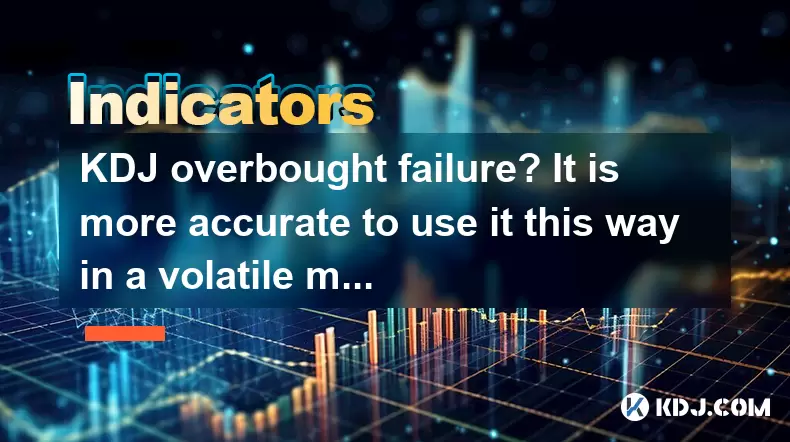
Understanding KDJ Overbought Signals in Volatile Markets
The KDJ indicator, also known as the stochastic oscillator, is a popular technical analysis tool used by traders to identify potential overbought or oversold conditions. In volatile markets, however, interpreting an overbought KDJ signal can be misleading if not used correctly. Many traders assume that an overbought reading always signals an imminent price reversal. This assumption may fail due to the rapid and erratic price movements typical of high volatility environments.
In such scenarios, price momentum often sustains itself longer than expected, allowing the asset to continue rising even when the KDJ line (J) spikes into overbought territory. Therefore, understanding how to interpret KDJ overbought failure becomes crucial for accurate trading decisions.
How KDJ Works: A Brief Overview
To effectively use the KDJ indicator, it's essential to understand its components:
- %K: The fast stochastic line, which reflects the current closing price relative to the recent price range.
- %D: The slow signal line, which is a moving average of %K.
- J: Derived from the formula 3×%K – 2×%D, J is the most sensitive line and often used to spot extreme levels.
Typically, readings above 80 are considered overbought, while those below 20 are seen as oversold. However, during volatile market conditions, these thresholds should not be treated as direct sell or buy signals without additional confirmation.
Why KDJ Overbought Fails in Volatile Conditions
One key reason KDJ overbought fails in volatile markets is because strong trends tend to keep the J line elevated for extended periods. For instance, during a sharp uptrend driven by positive news or macroeconomic events, prices may continue to rise despite the indicator being in overbought territory.
This phenomenon occurs because the stochastic oscillator measures relative price momentum rather than absolute price direction. In a rapidly rising market, the closing price continues to be near the highest price of the lookback period, keeping the KDJ values elevated. As a result, a trader who shorts based solely on an overbought signal might face significant losses.
Accurate Usage of KDJ in Volatile Market Environments
To increase accuracy when using KDJ in volatile markets, consider combining it with other tools:
- Use trend lines or moving averages to confirm the prevailing direction before acting on KDJ signals.
- Monitor divergence between KDJ and price — if the price makes a new high but KDJ does not, this could signal a weakening trend.
- Apply smoothing techniques like increasing the lookback period from 14 to 21 or 30 to reduce noise and false signals.
Additionally, traders should pay attention to candlestick patterns at critical KDJ levels. For example, a bearish engulfing pattern forming when KDJ is overbought can offer a more reliable reversal signal than the KDJ alone.
Step-by-Step Guide to Using KDJ in Volatile Markets
To implement KDJ effectively during volatile conditions, follow these steps:
- Adjust the KDJ settings: Increase the period from the default 14 to 21 or higher to smooth out the indicator.
- Overlay a moving average: Use a 50-period SMA or EMA to determine the trend direction.
- Identify key support/resistance zones: These zones help filter out false breakouts or reversals signaled by KDJ.
- Watch for candlestick confirmation: Look for pin bars, dojis, or engulfing candles at overbought/oversold levels.
- Combine with volume indicators: High volume during a KDJ crossover can validate the strength behind a move.
These adjustments make the KDJ indicator more robust and reduce the likelihood of falling into a false signal trap.
Frequently Asked Questions (FAQs)
Q1: Can KDJ be used in isolation during volatile cryptocurrency trading?
A: No, KDJ should not be used alone. It works best when combined with other tools like moving averages, candlestick patterns, and volume indicators to confirm trade setups.
Q2: What time frame is best for applying KDJ in crypto trading?
A: Short-term traders may prefer 1-hour or 4-hour charts, while swing traders often rely on daily charts. Adjust the KDJ period accordingly to suit each time frame and reduce false signals.
Q3: How do I adjust KDJ parameters for better performance in high volatility?
A: Increase the base period from the standard 14 to 21 or 30. Also, consider smoothing the %D line further by adjusting its moving average length.
Q4: Is divergence between KDJ and price always reliable?
A: While divergence is a powerful signal, it should not be acted upon without additional confirmation such as price action or volume changes, especially in highly volatile markets.
Disclaimer:info@kdj.com
The information provided is not trading advice. kdj.com does not assume any responsibility for any investments made based on the information provided in this article. Cryptocurrencies are highly volatile and it is highly recommended that you invest with caution after thorough research!
If you believe that the content used on this website infringes your copyright, please contact us immediately (info@kdj.com) and we will delete it promptly.
- 2025-W Uncirculated American Gold Eagle and Dr. Vera Rubin Quarter Mark New Products
- 2025-06-13 06:25:13
- Ruvi AI (RVU) Leverages Blockchain and Artificial Intelligence to Disrupt Marketing, Entertainment, and Finance
- 2025-06-13 07:05:12
- H100 Group AB Raises 101 Million SEK (Approximately $10.6 Million) to Bolster Bitcoin Reserves
- 2025-06-13 06:25:13
- Galaxy Digital CEO Mike Novogratz Says Bitcoin Will Replace Gold and Go to $1,000,000
- 2025-06-13 06:45:13
- Trust Wallet Token (TWT) Price Drops 5.7% as RWA Integration Plans Ignite Excitement
- 2025-06-13 06:45:13
- Ethereum (ETH) Is in the Second Phase of a Three-Stage Market Cycle
- 2025-06-13 07:25:13
Related knowledge
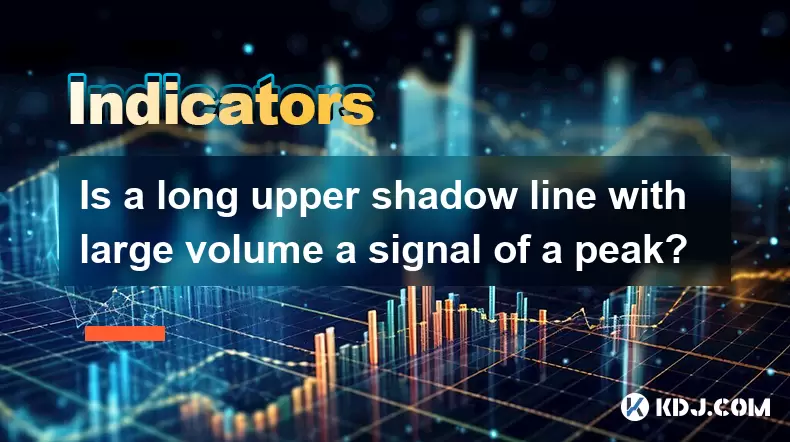
Is a long upper shadow line with large volume a signal of a peak?
Jun 17,2025 at 05:07am
Understanding the Long Upper Shadow LineA long upper shadow line, often referred to as a shooting star or inverted hammer depending on its location in a chart, is a candlestick pattern that indicates potential reversal from an uptrend. This pattern forms when prices rise significantly during the trading period but then fall back to close near the openin...

How to confirm the effectiveness of the average price line support in the time-sharing chart?
Jun 17,2025 at 12:56am
Understanding the Time-Sharing Chart and Its RelevanceIn cryptocurrency trading, time-sharing charts play a crucial role in analyzing short-term price movements. These charts typically display price fluctuations over a specific period, often ranging from minutes to hours. Traders rely on them to make quick decisions based on real-time data. The average ...

What does it mean when the momentum indicator breaks above the zero axis?
Jun 17,2025 at 12:43am
Understanding the Momentum IndicatorThe momentum indicator is a technical analysis tool used to measure the speed or velocity of price movements in cryptocurrency markets. It helps traders identify potential trend reversals, overbought or oversold conditions, and confirms existing trends. The indicator typically oscillates around a zero line, with value...
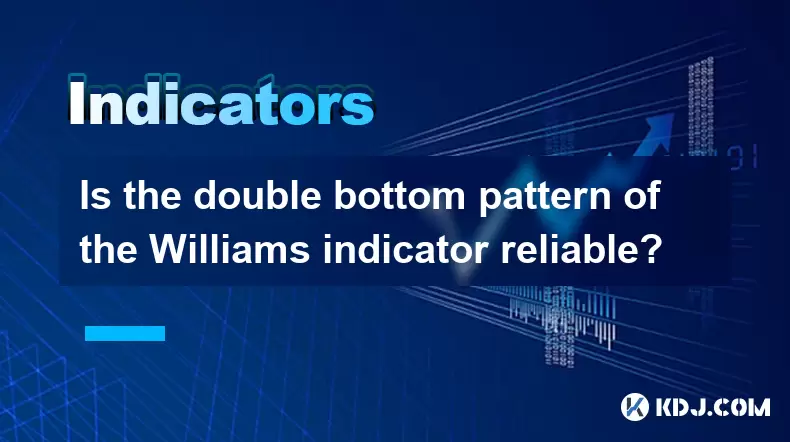
Is the double bottom pattern of the Williams indicator reliable?
Jun 17,2025 at 03:56am
Understanding the Williams Indicator and Its SignificanceThe Williams %R indicator, often referred to as Williams Percent Range, is a momentum oscillator used in technical analysis to identify overbought or oversold conditions in the market. Developed by Larry Williams, this indicator fluctuates between 0 and -100, with readings above -20 indicating ove...
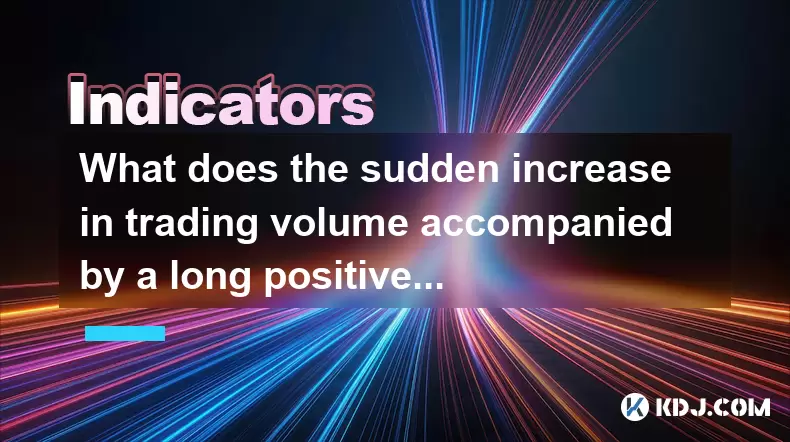
What does the sudden increase in trading volume accompanied by a long positive line mean?
Jun 17,2025 at 06:01am
Understanding the Sudden Surge in Trading VolumeWhen traders observe a sudden increase in trading volume, it typically signals a significant shift in market sentiment. This surge often indicates that more participants are entering or exiting positions, which could be due to news events, macroeconomic data releases, or institutional activity. High tradin...
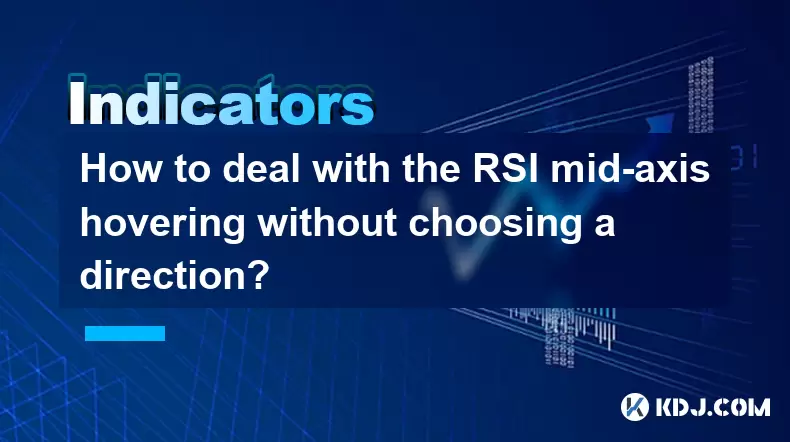
How to deal with the RSI mid-axis hovering without choosing a direction?
Jun 17,2025 at 02:02am
Understanding RSI Mid-Axis Hovering in Cryptocurrency TradingThe Relative Strength Index (RSI) is a popular momentum oscillator used by traders to assess whether an asset is overbought or oversold. In cryptocurrency markets, it's common for the RSI to hover around its mid-axis, typically at the 50 level, without showing a clear upward or downward trend....

Is a long upper shadow line with large volume a signal of a peak?
Jun 17,2025 at 05:07am
Understanding the Long Upper Shadow LineA long upper shadow line, often referred to as a shooting star or inverted hammer depending on its location in a chart, is a candlestick pattern that indicates potential reversal from an uptrend. This pattern forms when prices rise significantly during the trading period but then fall back to close near the openin...

How to confirm the effectiveness of the average price line support in the time-sharing chart?
Jun 17,2025 at 12:56am
Understanding the Time-Sharing Chart and Its RelevanceIn cryptocurrency trading, time-sharing charts play a crucial role in analyzing short-term price movements. These charts typically display price fluctuations over a specific period, often ranging from minutes to hours. Traders rely on them to make quick decisions based on real-time data. The average ...

What does it mean when the momentum indicator breaks above the zero axis?
Jun 17,2025 at 12:43am
Understanding the Momentum IndicatorThe momentum indicator is a technical analysis tool used to measure the speed or velocity of price movements in cryptocurrency markets. It helps traders identify potential trend reversals, overbought or oversold conditions, and confirms existing trends. The indicator typically oscillates around a zero line, with value...

Is the double bottom pattern of the Williams indicator reliable?
Jun 17,2025 at 03:56am
Understanding the Williams Indicator and Its SignificanceThe Williams %R indicator, often referred to as Williams Percent Range, is a momentum oscillator used in technical analysis to identify overbought or oversold conditions in the market. Developed by Larry Williams, this indicator fluctuates between 0 and -100, with readings above -20 indicating ove...

What does the sudden increase in trading volume accompanied by a long positive line mean?
Jun 17,2025 at 06:01am
Understanding the Sudden Surge in Trading VolumeWhen traders observe a sudden increase in trading volume, it typically signals a significant shift in market sentiment. This surge often indicates that more participants are entering or exiting positions, which could be due to news events, macroeconomic data releases, or institutional activity. High tradin...

How to deal with the RSI mid-axis hovering without choosing a direction?
Jun 17,2025 at 02:02am
Understanding RSI Mid-Axis Hovering in Cryptocurrency TradingThe Relative Strength Index (RSI) is a popular momentum oscillator used by traders to assess whether an asset is overbought or oversold. In cryptocurrency markets, it's common for the RSI to hover around its mid-axis, typically at the 50 level, without showing a clear upward or downward trend....
See all articles

























































































